Join us for a dive into the complicated touring rig of the only artist to win Grammy Awards in 10 different categories.
Jazz guitar god Pat Metheny recently played Nashville’s Ryman Auditorium on his solo tour supporting his latest record, Dream Box. Ahead of the show, PG’s John Bohlinger met with Metheny’s tech Andre Cholmondeley, who pulled back the curtain on what just might be the most complex solo rig ever devised. Afterward, Cholmondeley painstakingly wrote out Metheny’s signal path to help clarify the rig. Buckle up, and keep up if you can.
Brought to you by D'Addario.
Mellow Yellow
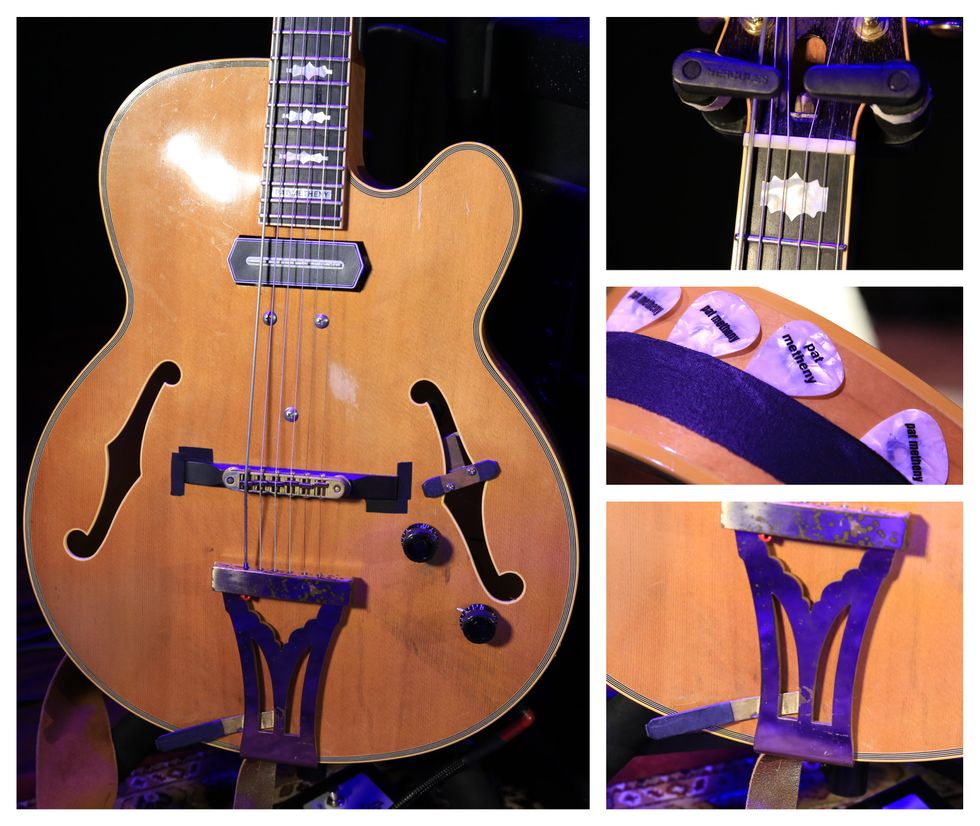
A longtime Gibson ES-175 player, Metheny struck up a friendship with Ibanez in the 1970s when he toured Japan. In 1996, they released their first Ibanez PM100 Pat Metheny Signature. This PM100 bears a .080-gauge flatwound string tuned an octave down to a low low E. The rest are Metheny’s normal D’Addario NYXL 10s.
The axe puts out with a lone Charlie Christian single coil pickup plus a microphone inside the guitar running to a separate output. On some occasions, the Christian pumps out more noise or hum depending on the venue's electricity, or even if there’s wifi present. When necessary, Metheny and his team use an EHX Hum Debugger, or an Ebtech Hum Eliminator.
The Axon Axe
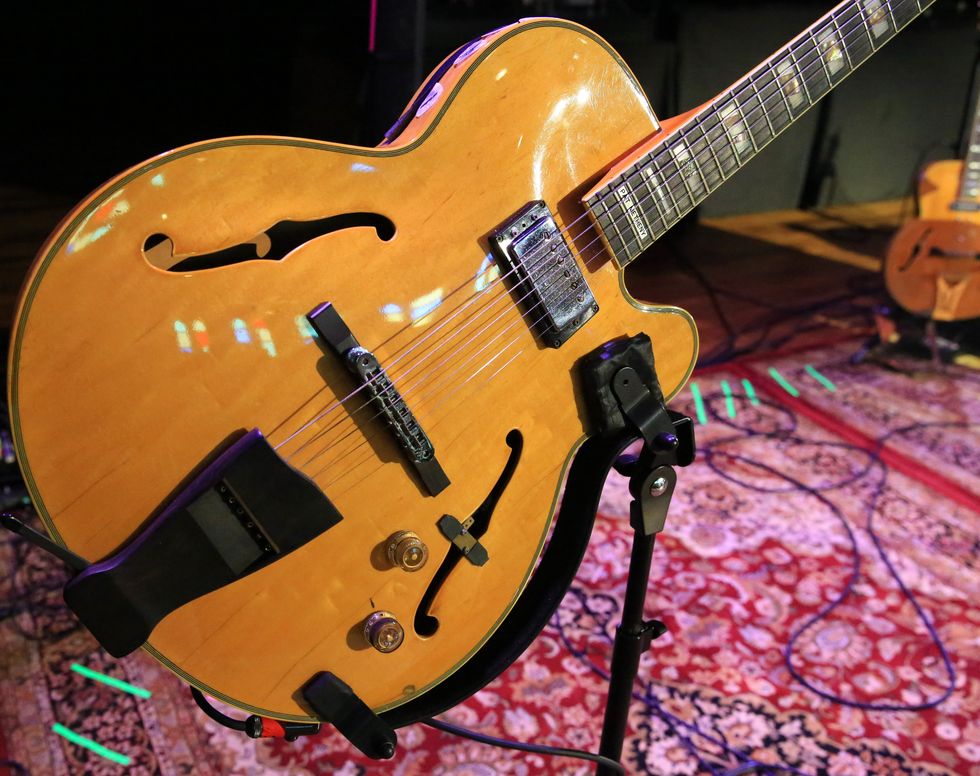
This Ibanez PM120—dubbed the "Axon Guitar"—lives on a stand so Metheny can play it with a second guitar on his back as needed as a MIDI controller. It’s got a Roland GK-style pickup with 13-pin output, connected to a 2007 AXON AX 50 synth controller, which drives the Orchestrion percussion instruments via Ableton. Pat can also send MIDI into any soft synth, and create loops inside Ableton, or any attached hardware besides the Orchestrion. (The Ableton 11 software runs on a MacBook Pro and through the show, it’s fed audio from three different guitars.)
Meanwhile, the normal audio output of this guitar hits an IK Multimedia TONEX, then a DI to the house and monitor systems.
Rockin' and Roland
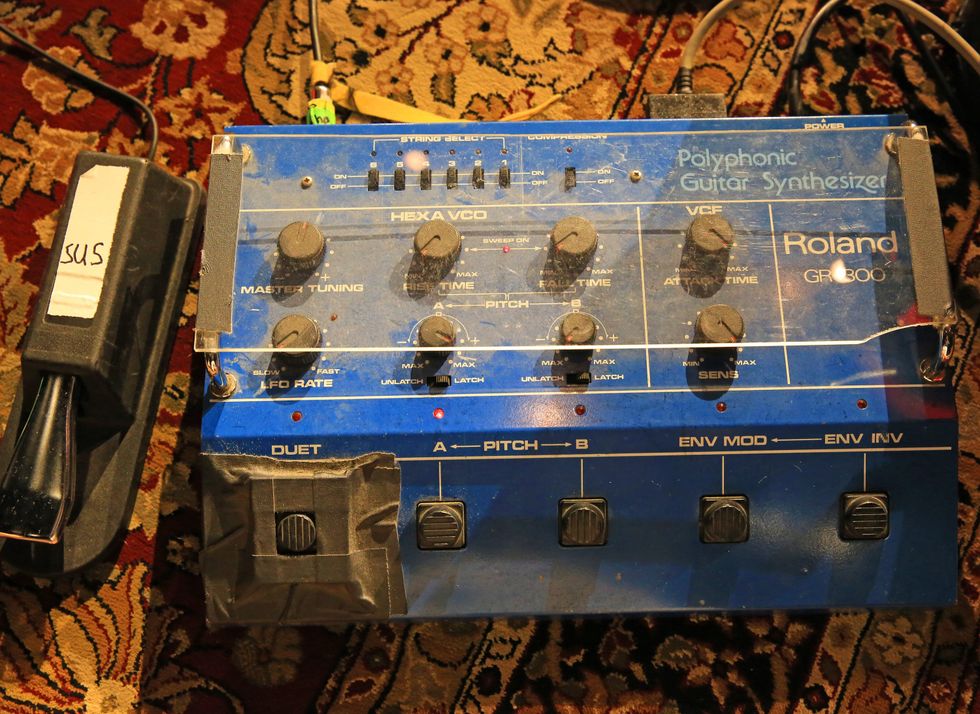
The Roland GR-300 synth and G-303 guitar synth controller have been part of Metheny’s music since the combo was invented in 1980. The GR-300 is built around an analog polyphonic synth with oscillators that must be tuned daily.
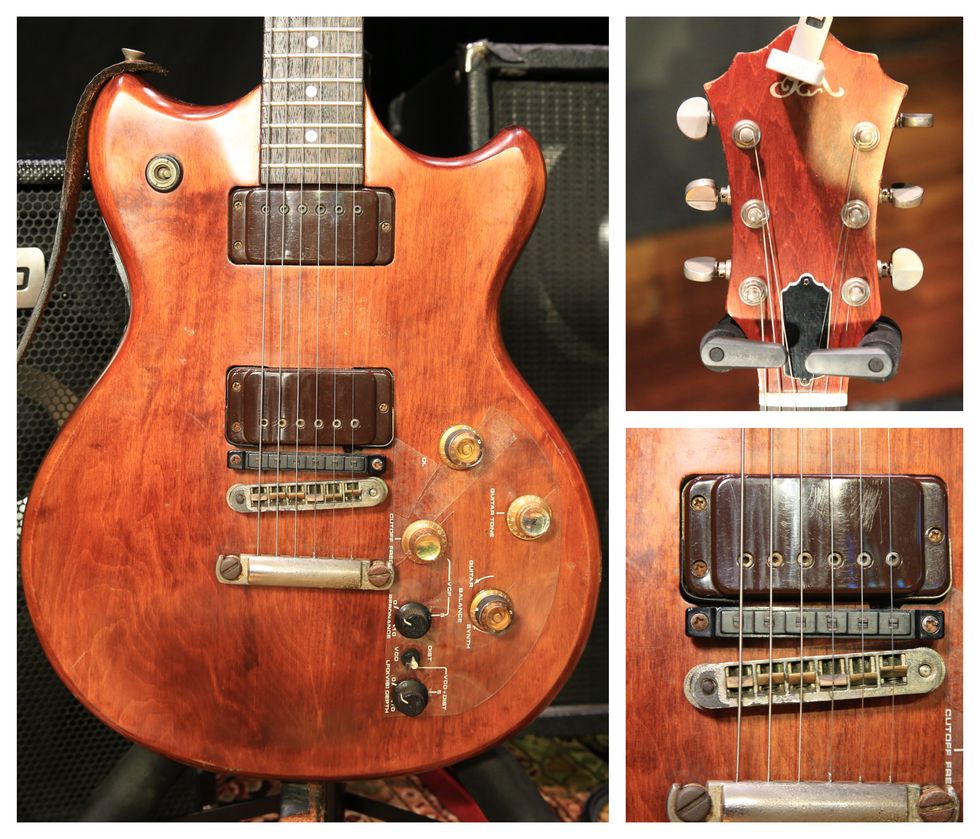
The G-303 is strung with D’Addario NYXLs (.010-.046).
Acoustic Arsenal
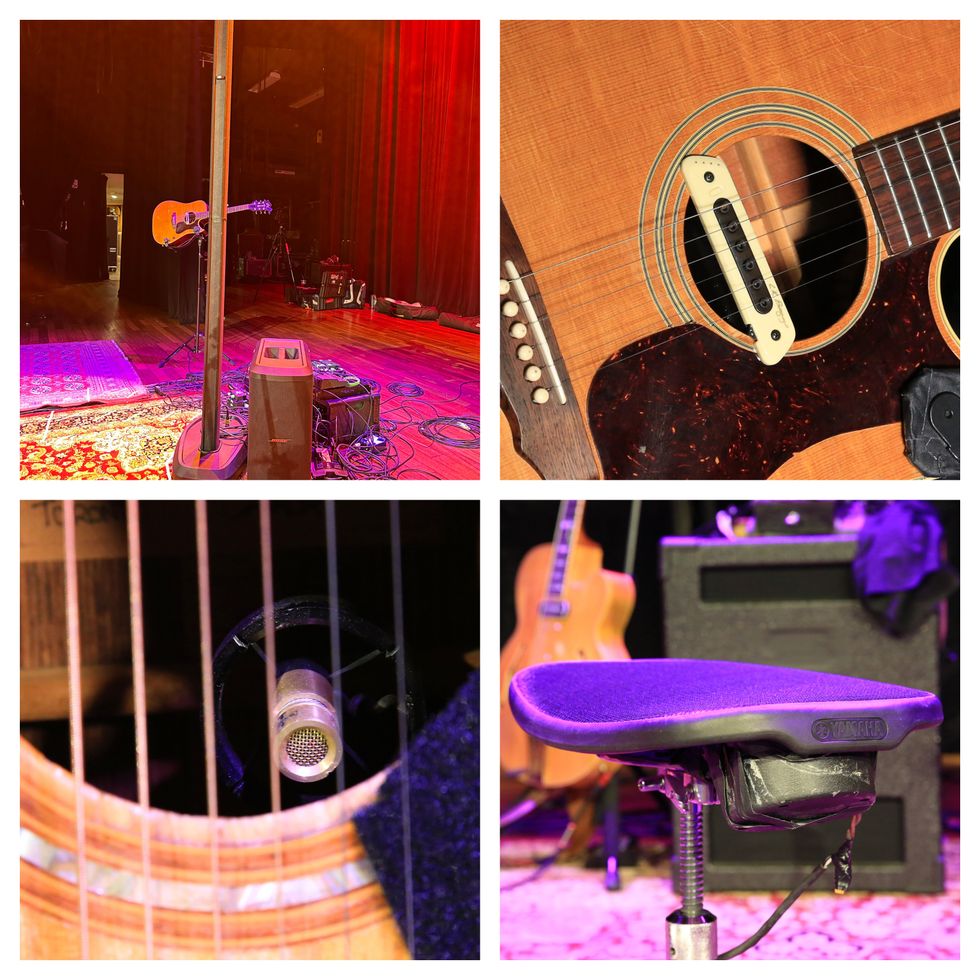
Each of Metheny’s acoustic guitars has two outputs: one from a standard 1/4" internal bridge pickup, and one from a condenser microphone mounted inside the guitars with a gooseneck or rigid metal arm. Metheny uses a variety of pickups, including Fishman, Go Acoustic Audio, LR Baggs, and the gut mics include offerings from Applied Microphone Technology and DPA Microphones.
All acoustics are treated to unique mix, EQ, and effects and monitored through a pair of Meyer UM-1P and Bose L1 speakers, plus a custom “thumper” in the Yamaha DSM100 mesh drum throne that Metheny sits on during performance.
Crazy 8
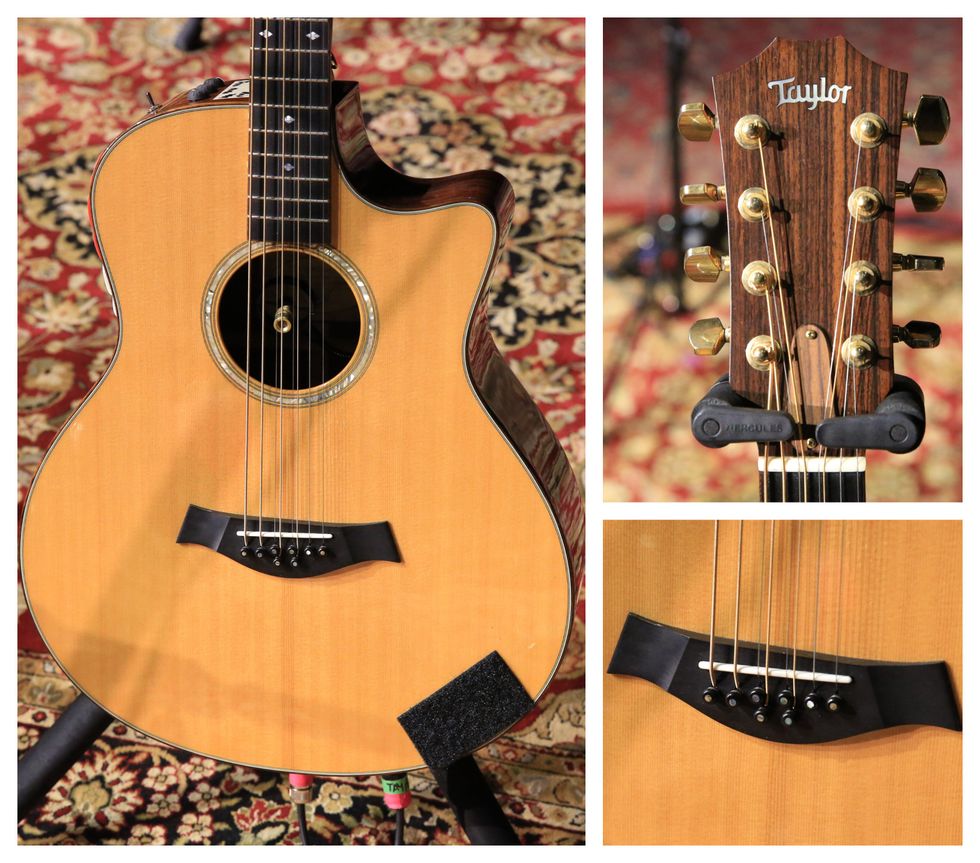
Metheny’s 8-string Taylor acoustic takes various tuning. Sometimes, it acts as a baritone with a unison in the middle. Other times, it’s tuned to F-C-D#-E-C#-A#-A#-A. Surprise, surprise: Metheny is always experimenting.
Manzer Monster
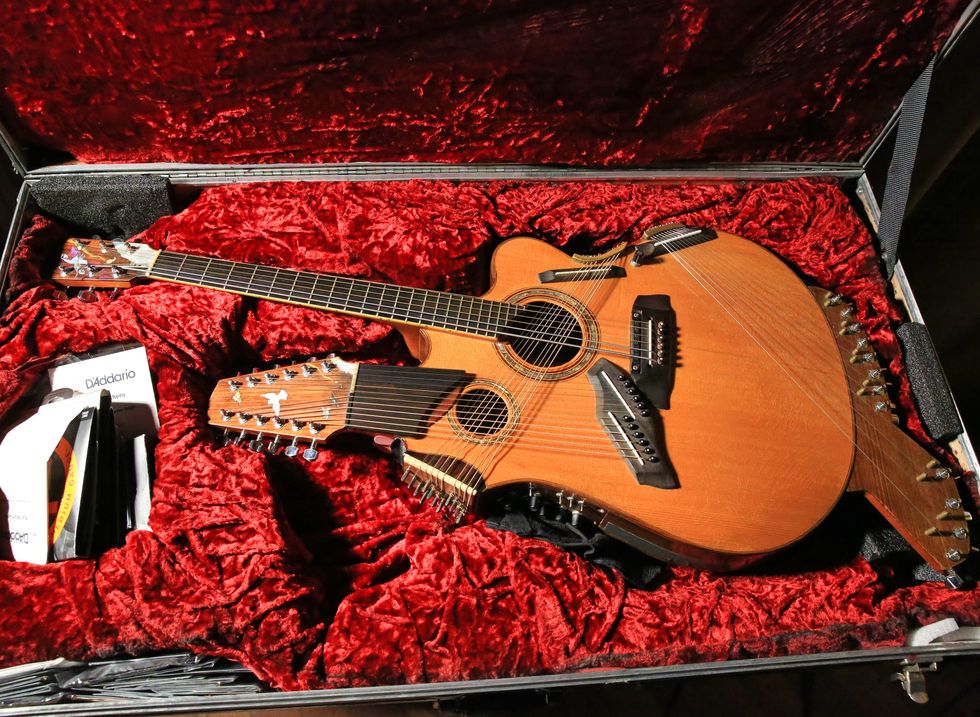
In 1984, Metheny asked Canadian luthier Linda Manzer to build an instrument with “as many strings as possible.” The resulting collaboration is the Pikasso 42-String Guitar. While fitted for internal mic as well as a hex pickup, it currently only takes the regular 1/4" output, which is an aggregate of all four neck/zone pickups. Each pickup can be switched in and out with a toggle switch, and there are independent volume pots for each neck, as well as EQ and a master volume. The volume module is powered by two 9V batteries.
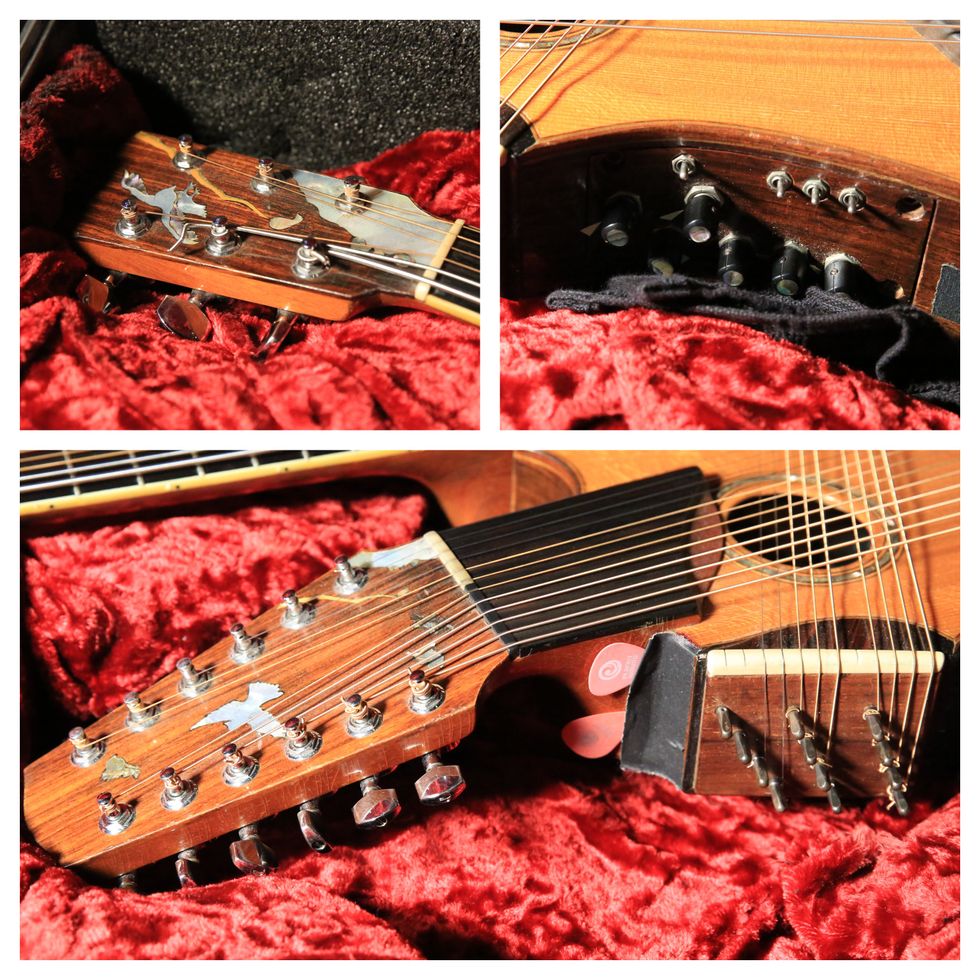
Here’s a closer look at the different angles within the Pikasso’s silhouette.
Keeping Up With Kemper
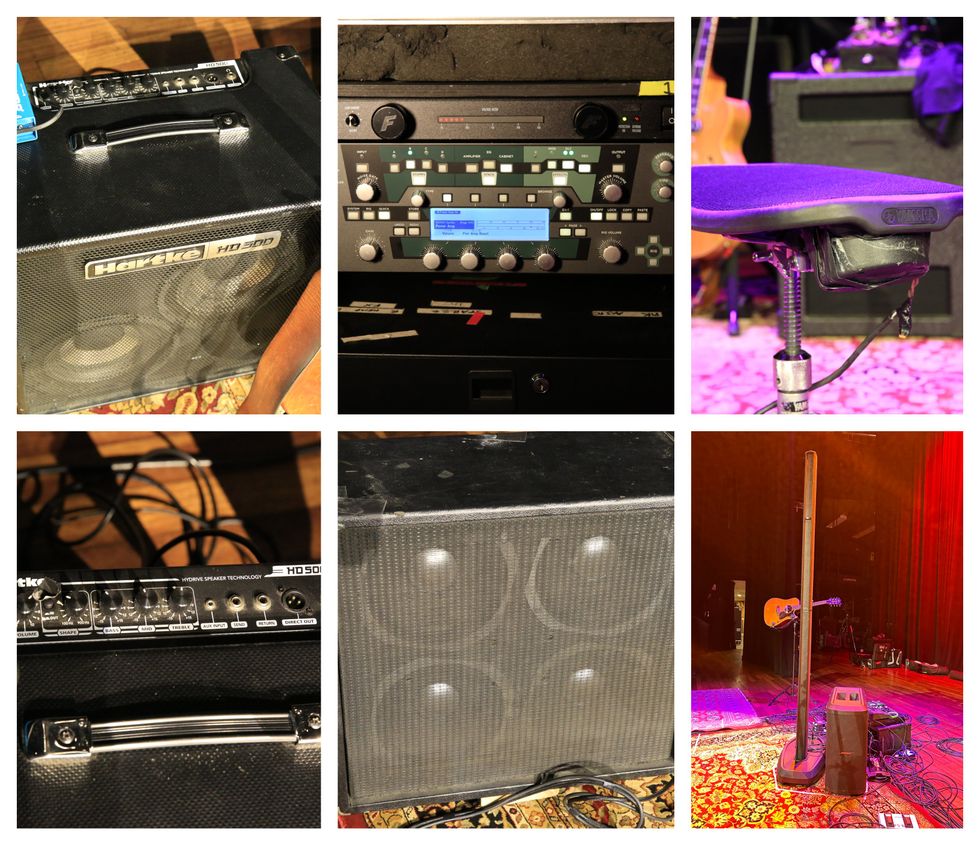
Various guitars run through a Kemper Profiler Power Rack. Each has a unique patch, but most usually use the models of a Fender Twin or a Roland JC-120, complete with verb, delay, and varying gain stages.
Here’s where things get tricky. Metheny runs a silent plug 1/4" cable from his guitars into a Lehle 3 at 1, enabling three stereo inputs—A, B, or C—which can be chosen with silent footswitches or via midi. A is designated for the Ibanez guitars, B takes the Roland setup, and C is home for the Taylor 8-string.
The outputs of all three are sent to a Gamechanger Audio Plus Pedal. (The effects-send out of the Plus feeds a mini Leslie amp set to slow spin.) The Plus’ mono out feeds the “alternative input” of the Kemper. The Kemper sends a number of outs: the XLR heads to a pair of Yamaha DXR-10 speakers; the 1/4" goes to a Radial stereo DI, then on to the house and monitor systems; and the Kemper’s own monitor out feeds an AUDAC EPA152 rackmount power amp. This last route is programmed with a slightly different, “less wet” FX mix than its companions. The AUDAC unit is set to run as two discrete amps, and sends audio to Metheny’s drum throne thumper and a classic Acoustic 4x10 cabinet.
The Dance
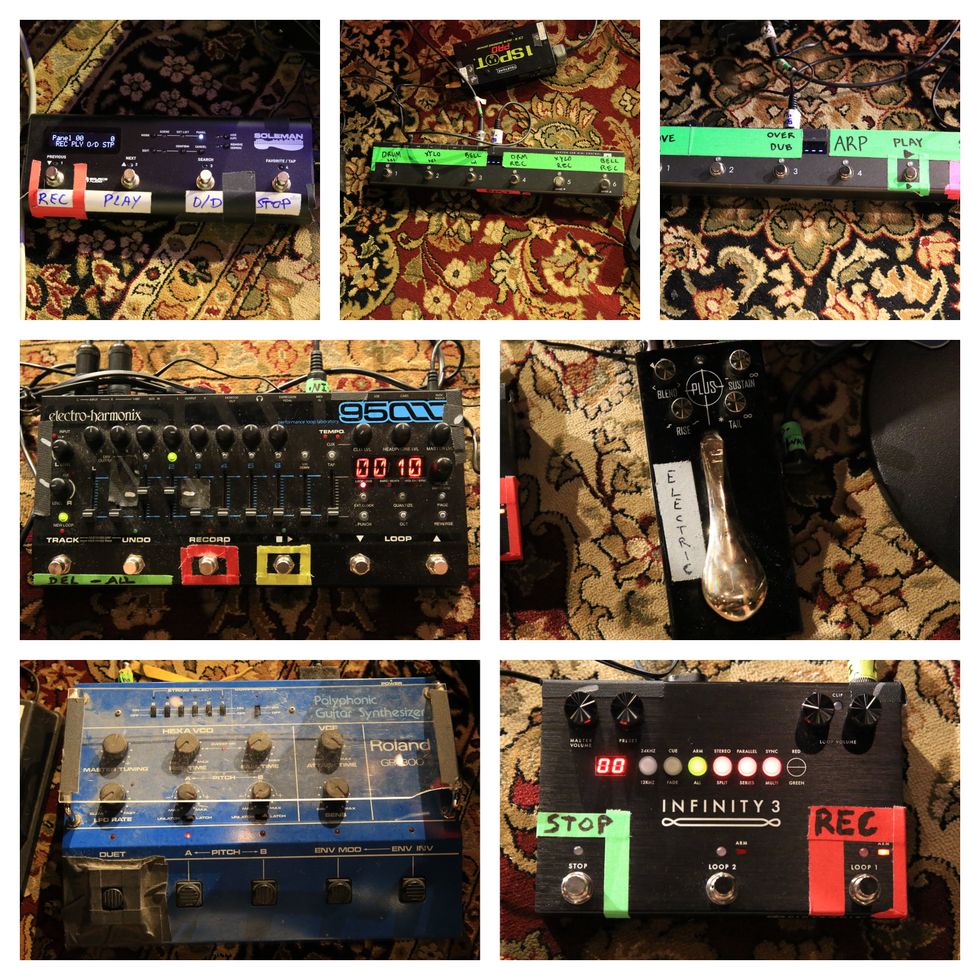
For the baritone acoustic which Metheny currently loops in this show, the looper of choice is a Pigtronix Infinity 3 (lower right). It’s fed from the thru/send of the Radial DI for the acoustic. A mono loop send from the Infinity goes to front of house and monitors via a Countryman active DI, and Metheny keeps track of the acoustic loop in his Meyer and Bose monitors. The rest of Metheny’s colors and signal manipulation comes from these tone tools including a Source Audio Soleman MIDI Foot Controller, a pair Blackstar Live Logic 6-button MIDI Footcontrollers, an Electro-Harmonix 95000 Stereo Looper, Gamechanger Audio Plus Pedal, and the aforementioned Roland GR-300.
Accompanying the Maestro
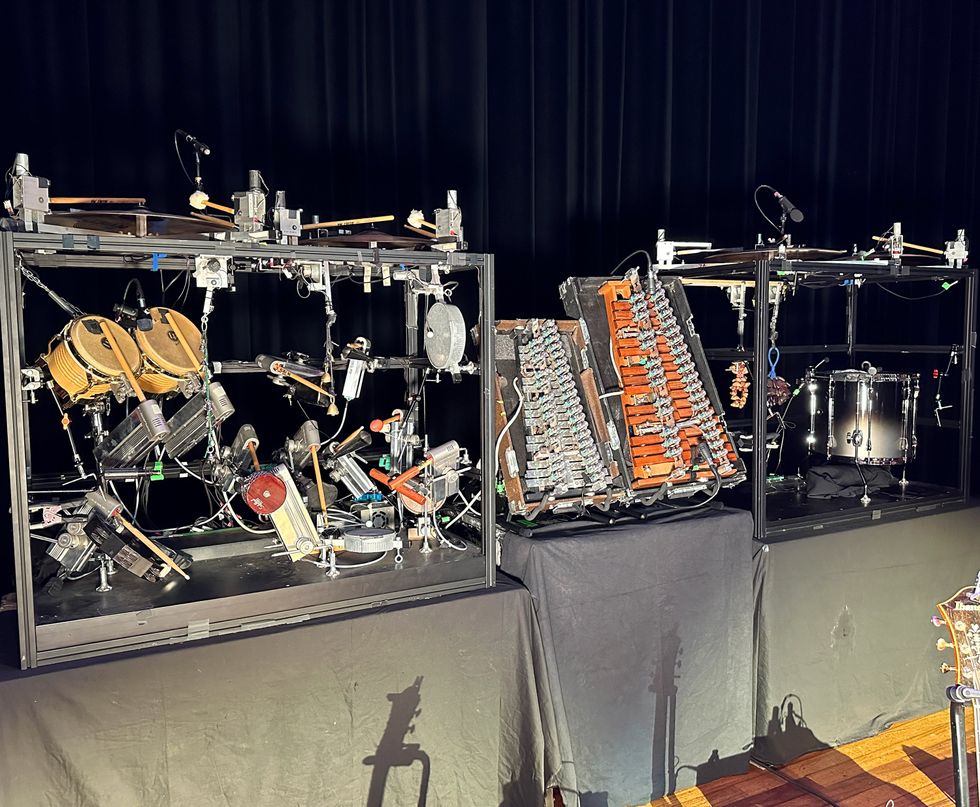
Here’s the percussion mechanisms backing up Metheny during his solo Dream Box tour.
Shop Pat Metheny's Rig

Ibanez PM 200
D’Addario NYXL 10s
EHX Hum Debugger
IK Multimedia TONEX Pedal Amplifier/Cabinet/Pedal Modeler
Squier Classic Vibe Bass VI
LR Baggs M1 Active Acoustic Guitar Soundhole Humbucker Pickup
Bose L1 Pro32 Portable PA System
Guild D-40 Traditional Acoustic Guitar
Kemper Profiler Power Rack
Lehle 3at1 SGoS Instrument Switcher
Gamechanger Audio Plus Pedal Piano-style Sustain Effect Pedal
Electro-Harmonix 95000 Performance Loop Laboratory 6-track Looper
Radial ProD2 2-channel Passive Instrument Direct Box
Pigtronix Infinity 3 Looper Pedal
Source Audio Soleman MIDI Controller Pedal
Blackstar Live Logic 6-button MIDI Footcontroller




![Rig Rundown: AFI [2025]](https://www.premierguitar.com/media-library/youtube.jpg?id=62064741&width=1245&height=700&quality=70&coordinates=0%2C0%2C0%2C0)















![Devon Eisenbarger [Katy Perry] Rig Rundown](https://www.premierguitar.com/media-library/youtube.jpg?id=61774583&width=1245&height=700&quality=70&coordinates=0%2C0%2C0%2C0)












































